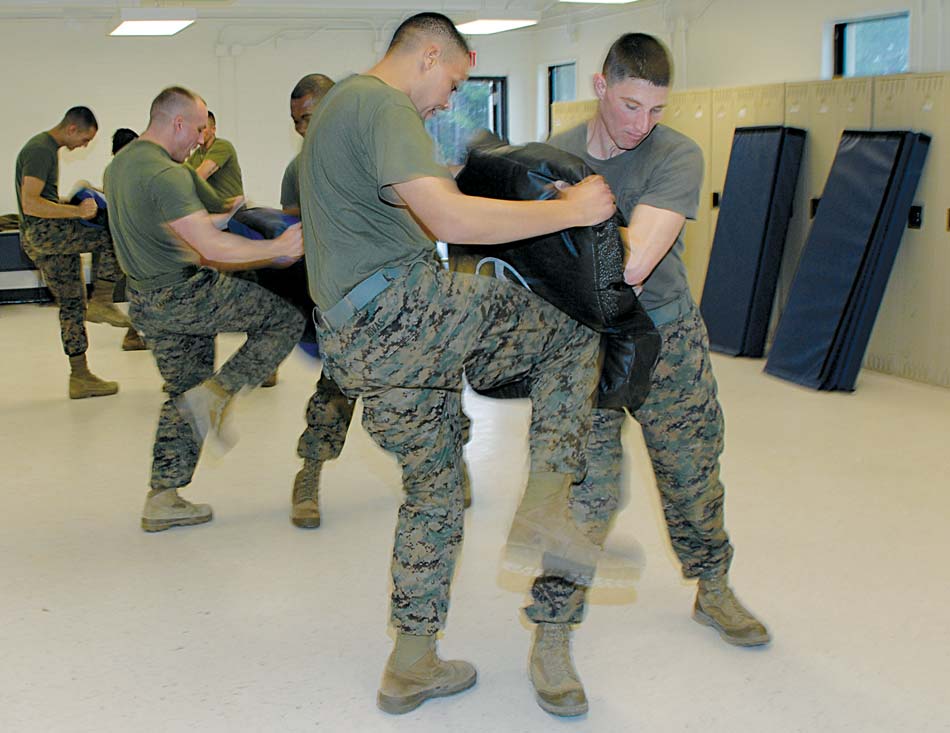The information presented in this article is intended for discussion purposes only. Nothing in this article should replace your department’s training and policies. You are responsible for your own open hand techniques training and ensuring you stay within the laws of your state. Contact your department’s trainers and legal team with any questions.
There are a lot of different unarmed combat schools out there that teach open hand techniques. Many of them are quality training centers that offer valuable instruction. Regardless of the style of the training, I believe simplicity and techniques that work with the body alarm response are key to effectiveness in “empty hand” combat.

My favorite four open hand techniques are the palm strike, forearm strike, knee strike and vertical stun. All are easy to learn and practice and work well with the body under stress. Let’s talk about each of these.
Palm Strike
The palm strike (aka “palm heel strike”) is like throwing a punch, but with an open hand, rather than a fist. The fist exposes a lot of fragile hand bones to impact on a hard surface (the suspect’s head, teeth, etc.) Though I’ve never done it, a good friend of mine broke his hand during a fight with a suspect, when his fist landed a blow on the suspect’s head.
I have, however, used palm strikes to good effect. With a palm strike, you are landing a blow with the heel of your hand. I can’t tell you if the foot-pounds of energy is greater or less than a closed fist, but I can tell you it will knock out teeth with no injury to yourself. (“Why you should never bite a police officer” is a story I will write another day.)
Some people would classify a palm strike as a hard empty hand technique as opposed to soft hand techniques like a wrist lock or arm bar.
If you take martial arts, you may be instructed on how to form and strike with a fist. Use the techniques that you are most skilled with. However, talking with your instructor may lead to additional training they can offer you that would be helpful with your law enforcement duties.
Forearm Strike or Elbow Strike
The forearm strike is an excellent tool, especially when you are in very close with a combative suspect. With the forearm strike, you are landing a blow with the last four to six inches of your forearm closest to your elbow. Be careful – you should not use your elbow for the strike as it is relatively fragile as compared to other bones in your body.

When in close, the forearm strike can be devastating. Twist your hips and throw your weight into it. In addition to effects of a forceful impact to the face or other soft target, a forearm strike to the chest can shove the suspect off of you and give you an opportunity to transition to a weapon or other technique.
Knee Strike
Knee strikes can be extremely effective also. Like a forearm strike, knee strikes are delivered in very close range.
When you are using a knee strike, you should use the area above the knee, not the knee itself. The knee is a joint that doesn’t need any undue trauma from striking others. If you are sitting in a chair with your feet on the floor and knees bent at a 90º angle, the fist-sized portion of area above the knee is the ideal area to use for striking.

Knee strikes can be landed on the inside or outside of the suspect’s leg while standing, or into any available target while on the ground. If you are tied up with the suspect in a standing position, you can lock your hands behind the suspect’s head, pulling him forward. This will bring him off balance, and open up his solar plexus/gut to landing repeated knee strikes.
I’ve frequently used knee strikes on suspects who become combative when you attempt to handcuff them. Landing a sharp knee strike to the outside of the upper leg can cause a momentary loss of stability and disrupt the subject’s thinking. When this happens, I’m often able to swiftly gain control of the subject and handcuff him.
Vertical Stun
The vertical stun is fairly simple, though I have seen it infrequently used. It does require the use of a wall or other hard surface.
When applying a vertical stun, you drop your center of gravity and drive forward into the combative suspect, slamming them into some solid, upright surface. The combination of your sudden force and the jarring shock of a sudden stop effectively stuns many people who are unprepared for such a technique.
I used a variation of this technique on someone who was trying to stab me with a Marine KA-BAR knife. It worked then and I’ve seen it work since.
The common denominator to all of these techniques is that they are all easy to use under stress. None of them require fine motor skills, and all of them work with body alarm response. All of them are easy to teach and they are likely to “be there” when you need them.
Get in the gym and train with them. Bags and a partner help, but you can even use a training dummy.